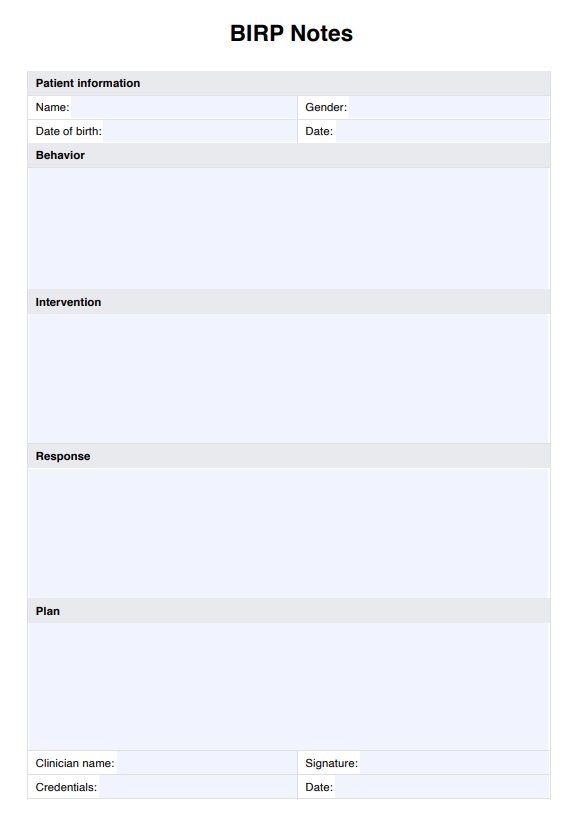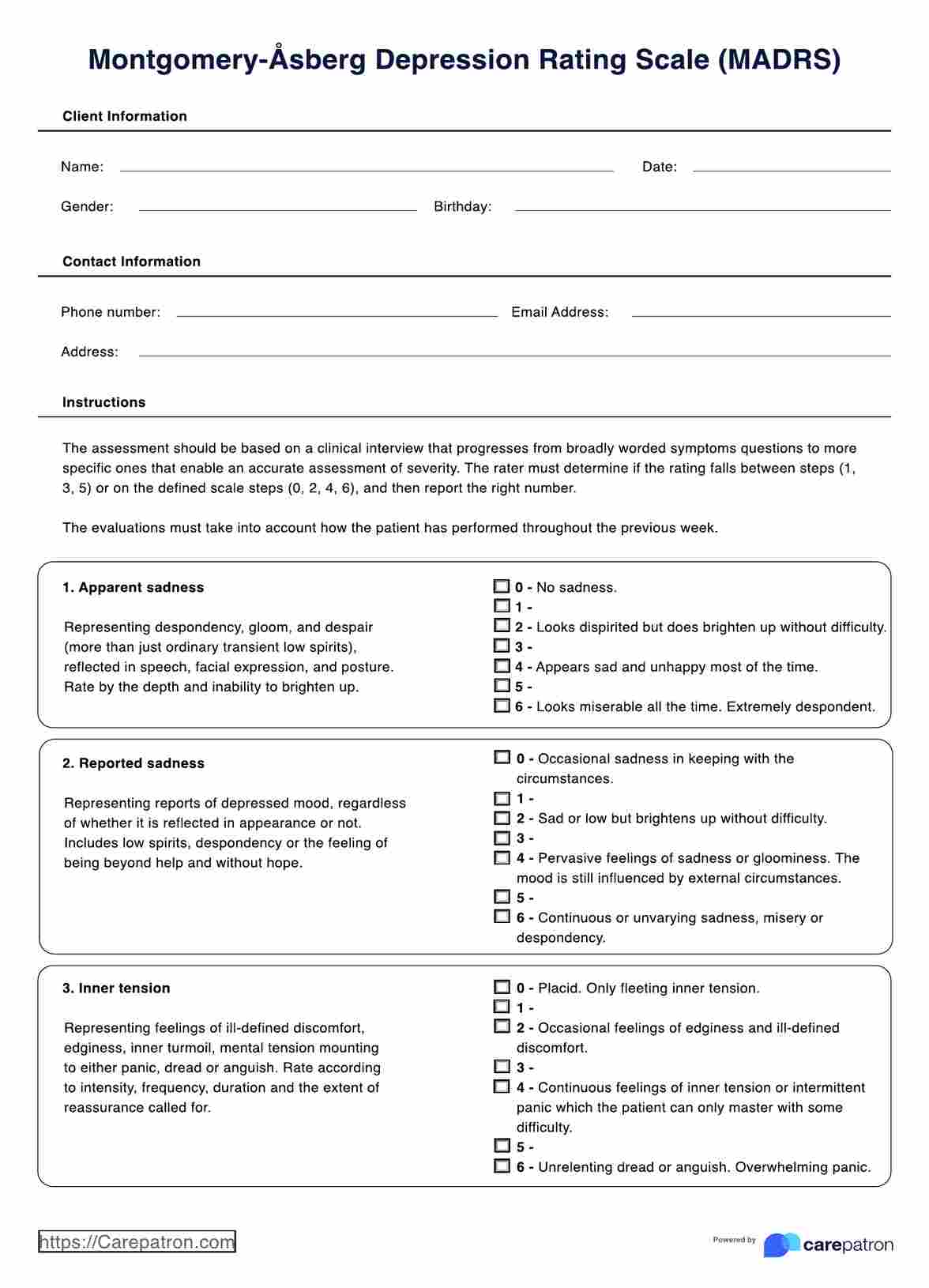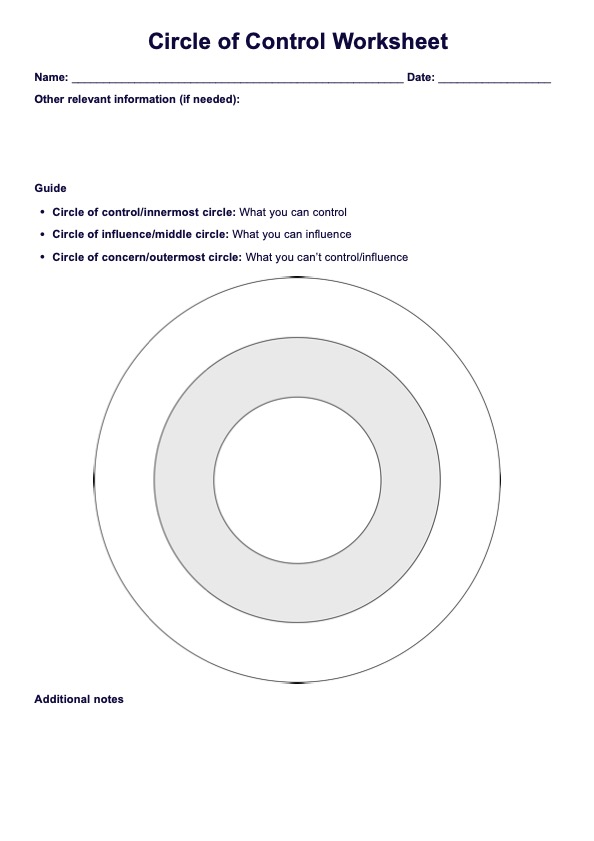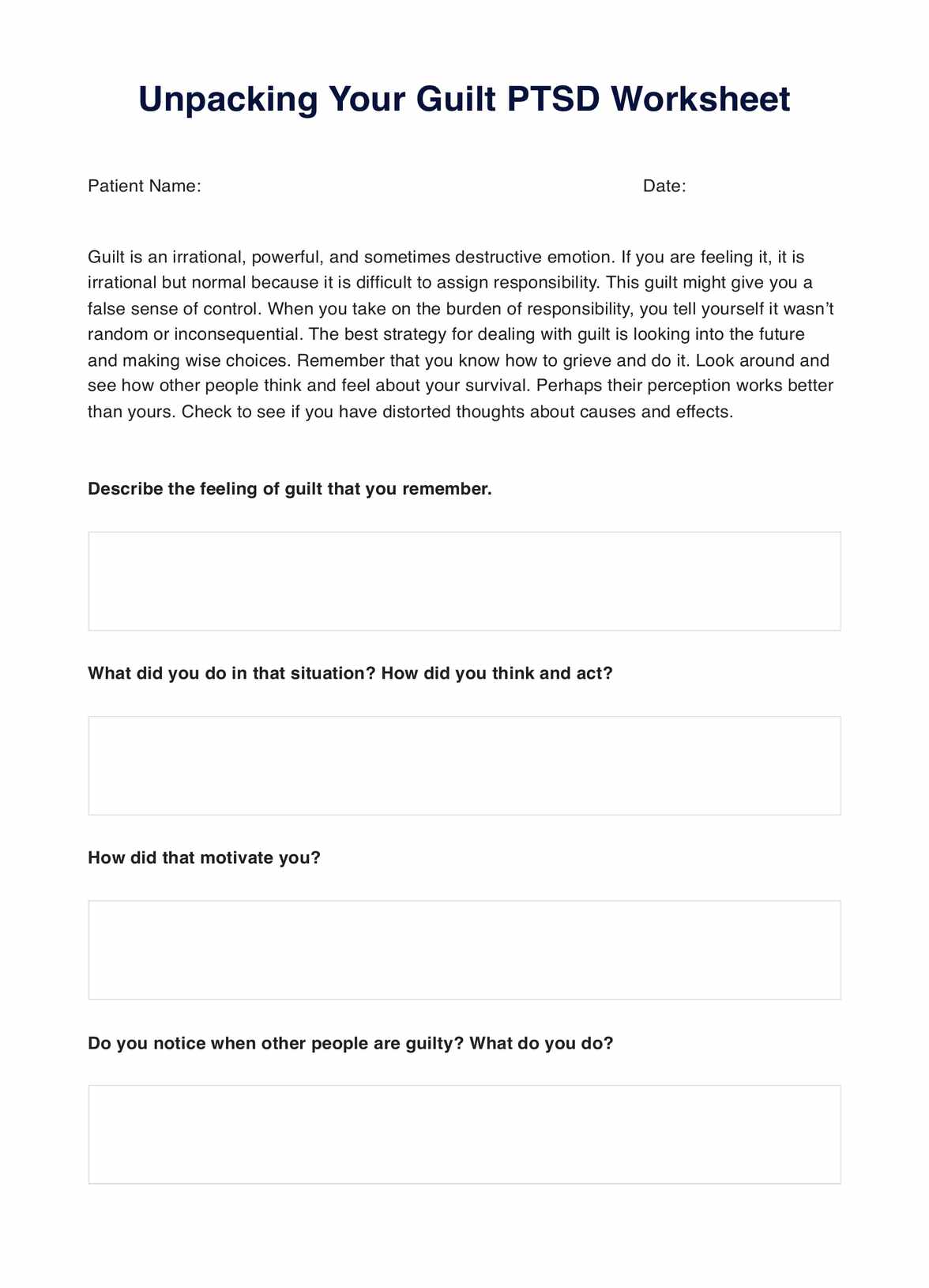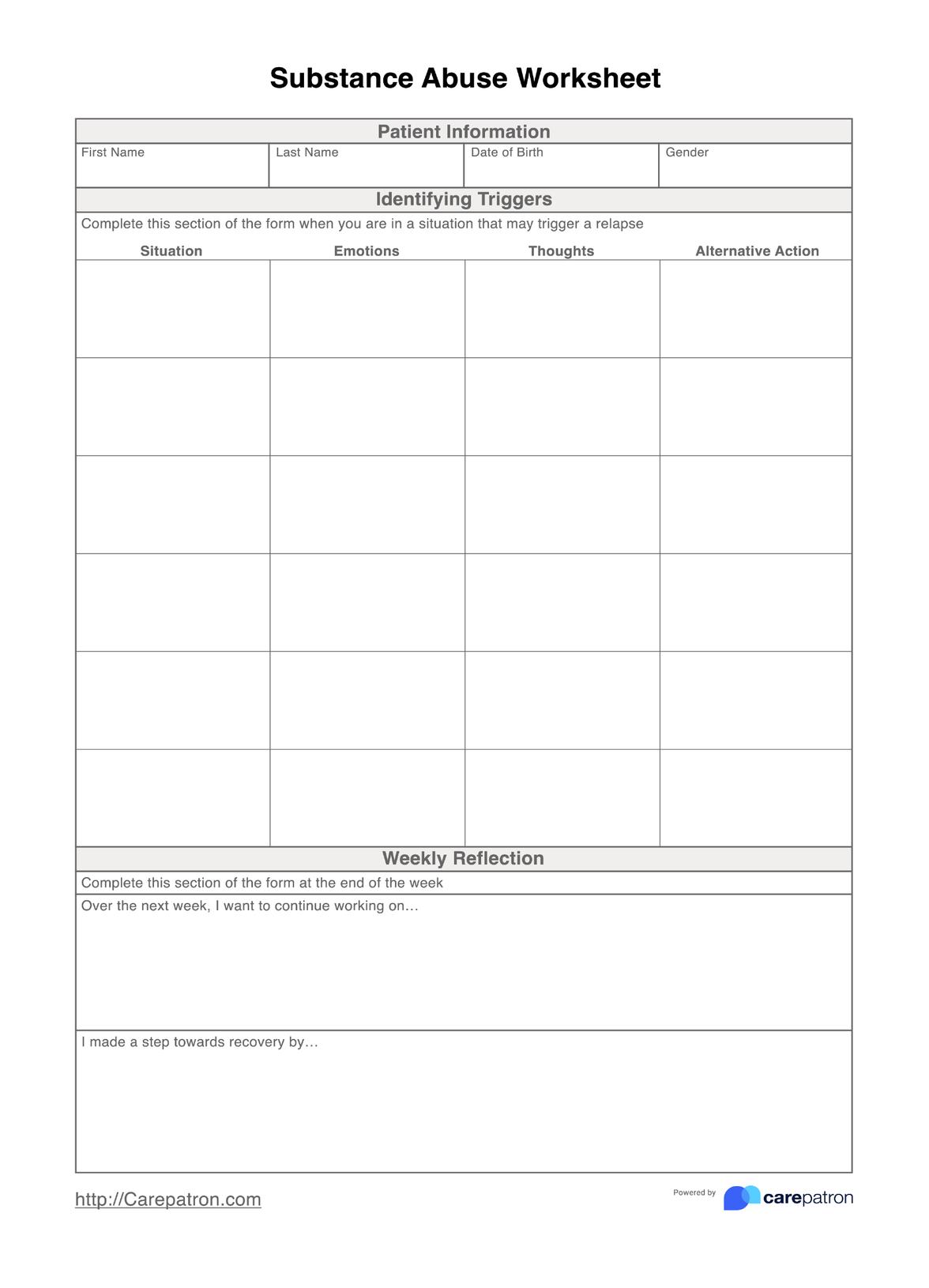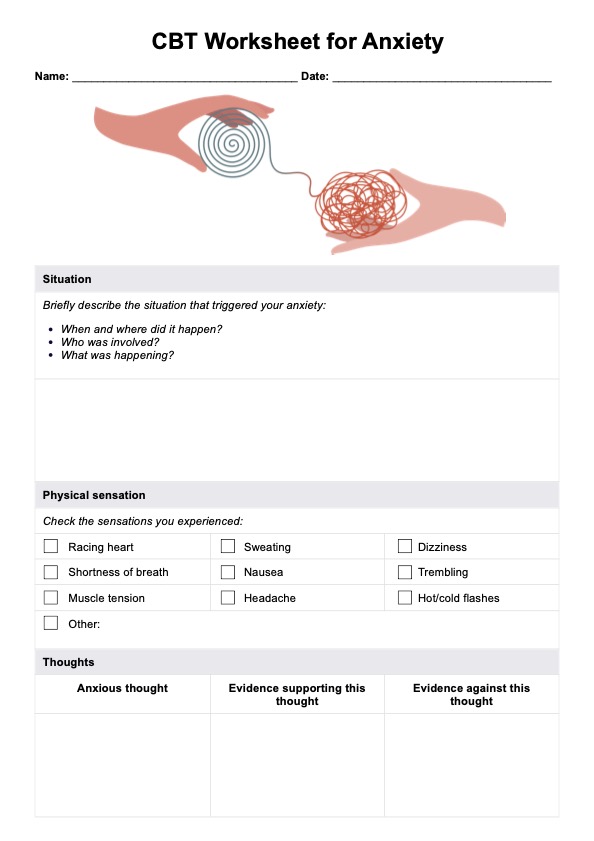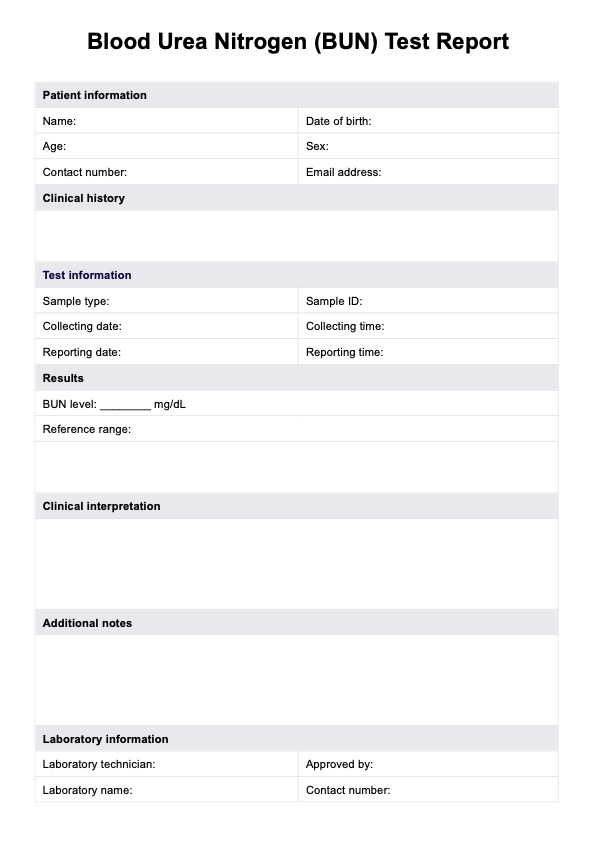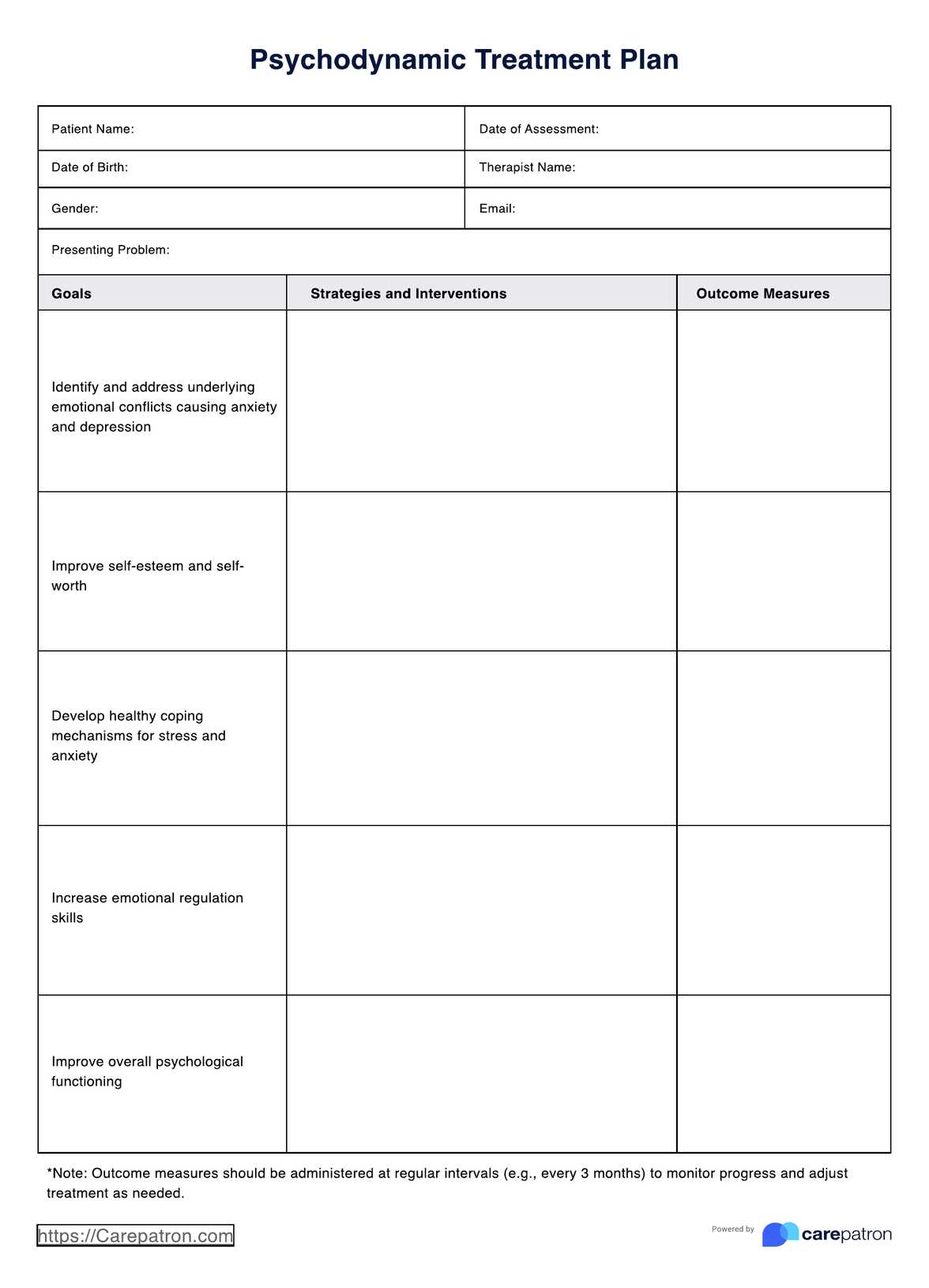Habit Journals
Discover how a Habit Journal can reinforce positive habits and help your clients achieve success. Download a free PDF template and example today!


What is a Habit Journal?
Habits are behaviors that become ingrained in our lives, often through repetition and practice. They can range from simple daily routines, such as brushing your teeth, to more complex behaviors, such as exercising regularly to reach health goals. The types of habits we implement in our routines can affect our lifestyle and overall well-being.
Habits can be beneficial or detrimental to our health, depending on the type of behavior associated. Beneficial habits are often productive and can change life circumstances. Alternatively, some habits can encourage more antisocial or negative behaviors that are detrimental to our health and well-being.
Building positive, productive habits can help us reach our goals and lead healthier lives. This can be simplified by implementing a habit journal, which allows individuals to begin tracking habits and reflect on their journey. This can involve setting reminders, making small daily changes, or completing weekly reviews. For example, if you want to become more active, you could start by going for a short walk each evening after work. Doing this consistently will eventually make it a habit.
To help individuals form better and more positive habits, mental health professionals may implement a Habit Journal in their practices and treatment plans. This resource enables clients to track their progress by encouraging daily journaling to support new habits and break old ones. It can also provide insight into the triggers, rewards, and barriers to forming new habits.
Habit Journals Template
Habit Journals Example
How does it work?
Our free and printable Habit Journal allows clients to log into their daily routines to form healthier habits and reach their goals. Here are the steps to help you begin:
Step One: Get a copy
Access the free Habit Journal using the link on this page or the Carepatron app. Alternatively, you can download a copy from our handy resources library.
Step Two: Client Consultation
Provide your client a copy of the resource, explaining how this works and why it may benefit them. Encourage them to use the journal daily, even if it is just one line or a to do list.
Step Three: Set realistic goals
Collaborate with your client to find out what their goals and objectives are. These must be realistic and attainable, as this can help enhance motivation and adherence to new habits and changes.
Step Four: Client journalling
Encourage clients to build a journaling habit by completing one entry per day. Note that there is no limit to how long or short an entry should be. It is a way in which clients can track and reflect on their journey.
The journey to success is often not linear and can sometimes be overwhelming. With this log, clients can look back to the beginning of this process and review their goals to see how far they have come. This can enhance their confidence and motivation to continue.
Step Five: Review and Support
Review the client's journal entries to discover patterns, triggers, and rewards. This information can be used to develop some strategies to help them form new habits and reach their goals.
Furthermore, practitioners need to provide ongoing support to their clients. This involves providing guidance where possible and addressing concerns or queries during consultations.
When would you use this template?
Whether adopting healthier eating habits, exercising more regularly, or improving sleep hygiene – the Habit Journal can be an effective tool. Here are some situations in which this resource would be useful:
Daily progress and habit tracker
The Habit Journal may help clients track their daily habits and identify patterns influencing their progress. This may inform the inclusion or exclusion and help them remain motivated and focused throughout their journey.
Identifying triggers
The Habit Journal can also be used to help identify potential triggers that may be hindering your client's progress. It can help them become more aware of and better prepared for any challenging situations as they strive toward achieving their goals.
Document successes
This template is also an effective way for your clients to document and celebrate their successes along the way. Not only will this help them stay positive and focused, but it can also serve as a reminder of all they have achieved.
Effective planning
Clients may use the journal to proactively plan their tasks or to do lists. These can be created a few days or a week ahead and may support better decisions to reach their goals.
Who may use the Habit Journal?
Our printable Habit Journal is designed to be a resource for health professionals seeking to support their clients when building productive habits, enhancing behavior, and achieving their aspirations. Health practitioners who may benefit from this resource include:
- Social workers: These practitioners are often supporting individuals experiencing financial, housing, or personal issues. The journal may help individuals meet their financial goals, by dedicating time to support new habits and resources.
- Life coaches: When working with individuals wanting to transform their health and lifestyle, life coaches may use the journal to help develop lifetime-persistent habits in favor of health enhancement.
- Therapists: The journal may help counselors and clients identify triggers or situations that cause feelings or emotions, such as guilt, that may be impacting mental health. This may inform strategies and habits to limit the occurrence of these.
Additionally, the template can be used across multiple therapies for individual and group sessions. This can enhance transparency within therapeutic procedures, and may address multiple inter-connected habits at once. Furthermore, it is excellent as an educational resource, enhancing client understanding around habit formation and becoming their own best advocates.
.png)
Benefits
Our free Habit Journal worksheet provides a range of advantages to help enhance your practice and support your clients in building productive habits to succeed in their goals.
All-in-one
This template can be used to devise a combination daily journal when habits or goals are interconnected. For example, food and sleep journals related to health goals can be incorporated into an all-in-one habit journal. This may be particularly beneficial when the
Pre-existing plan
For most people, planning can be the most consuming task. Our template removes the complexities around creating a habit journal by providing a structured format that is ready to use, allowing you more time to focus on building positive habits.
Ongoing accessibility
Our mobile template allows you to access and customize your client’s habit journal at any time. Depending on your client’s preferences, the template can be easily accessed online or printed by downloading the PDF.
It's easy to use
Our template provides a quick start guide to habit journaling, breaking down the steps and organizing relevant sections to structure the journal. This simplifies the process for your clients, helping you as a practitioner support their process.
Self-determination
Using this template, clients can actively begin creating new habits, monitor their progress, and succeed in their goals. This promotes self-determination, empowering clients to take control of their journey, helping them succeed.
Transparency
The Habit Journal helps facilitate a healthy, productive dialogue during therapy to support clients in achieving their goals. It encourages a transparent collaboration, enhancing the therapeutic relationship.
Commonly asked questions
Mental health professionals can use a Habit Journal to help clients stay on track and reach their goals.
The Habit Journal helps your clients to take ownership of their journey to success. It also encourages open communication between client and therapist, allowing them to work together towards their goals.
The Habit Journal can be used anytime during therapy to help track progress and establish achievable goals. It can also be used as a tool for self-reflection outside of the session.


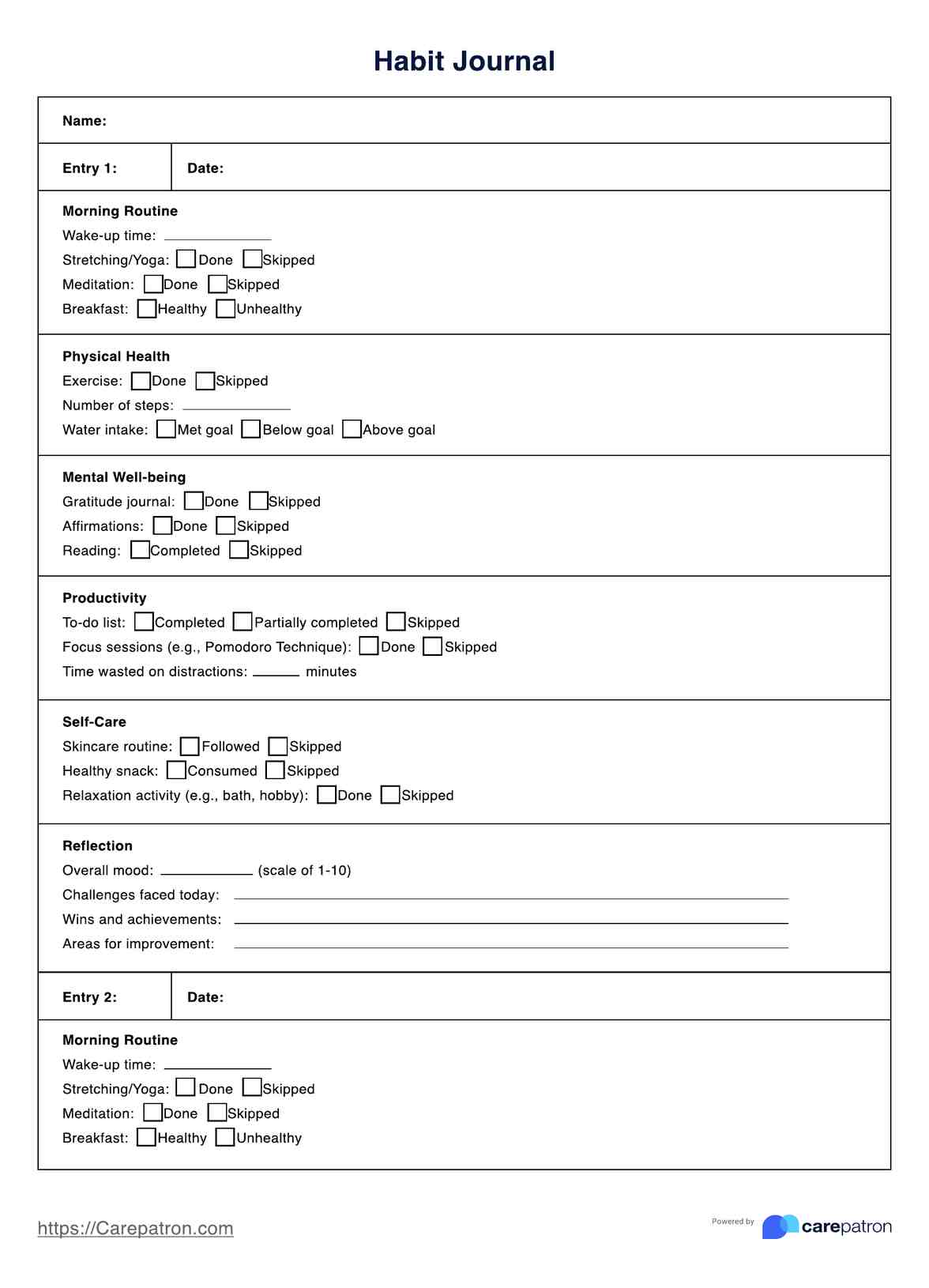
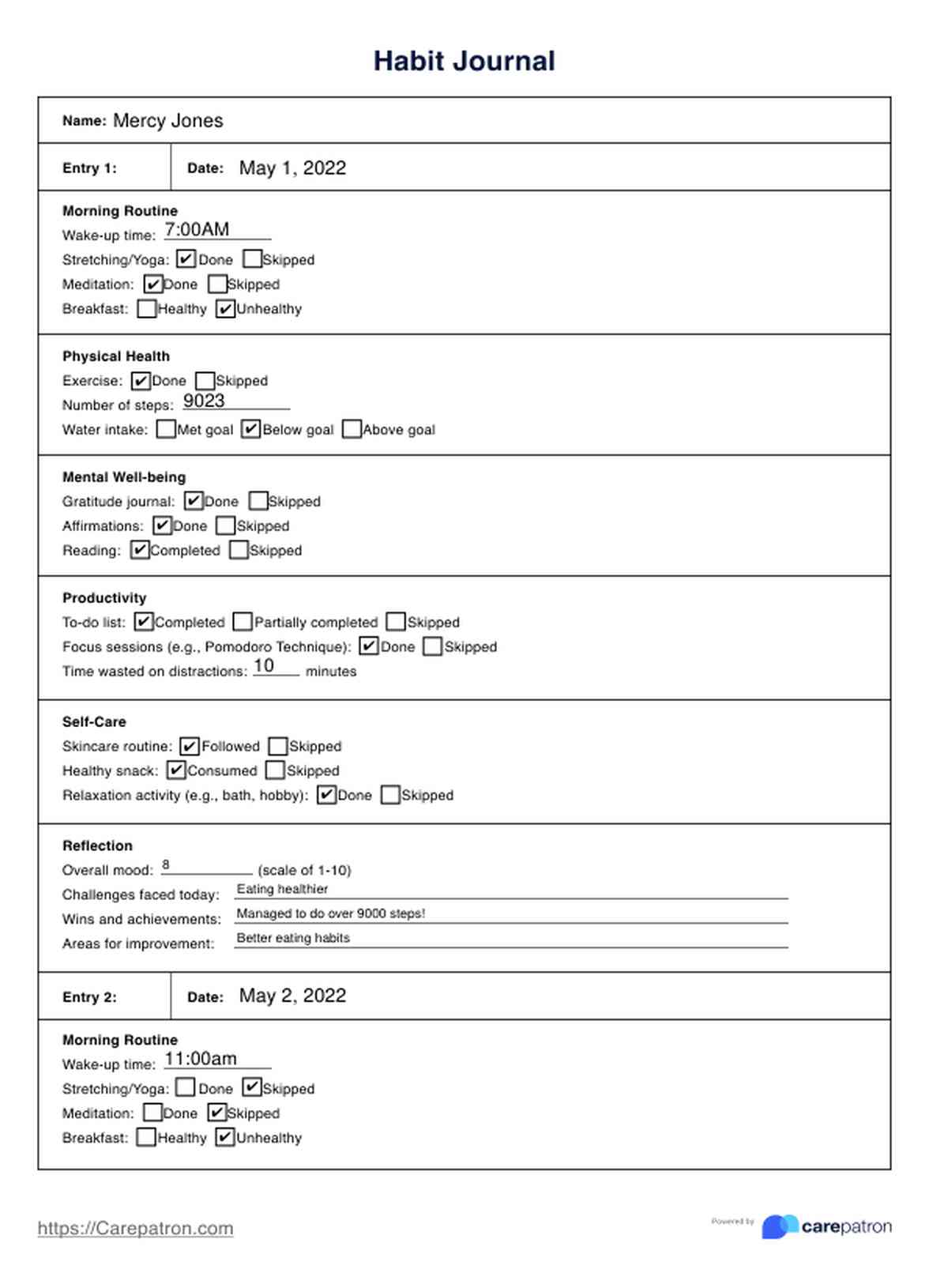

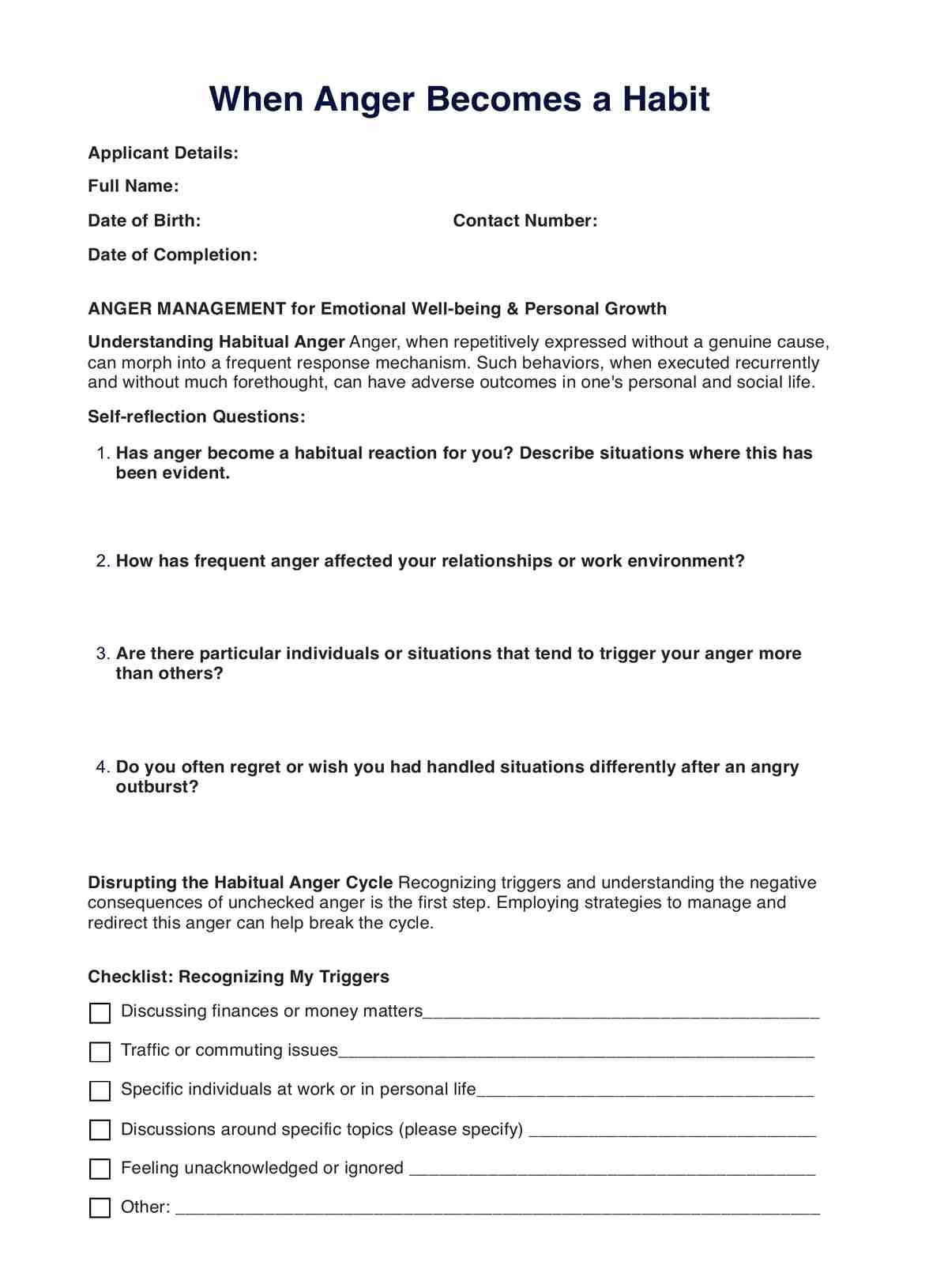














-template.jpg)





















































































